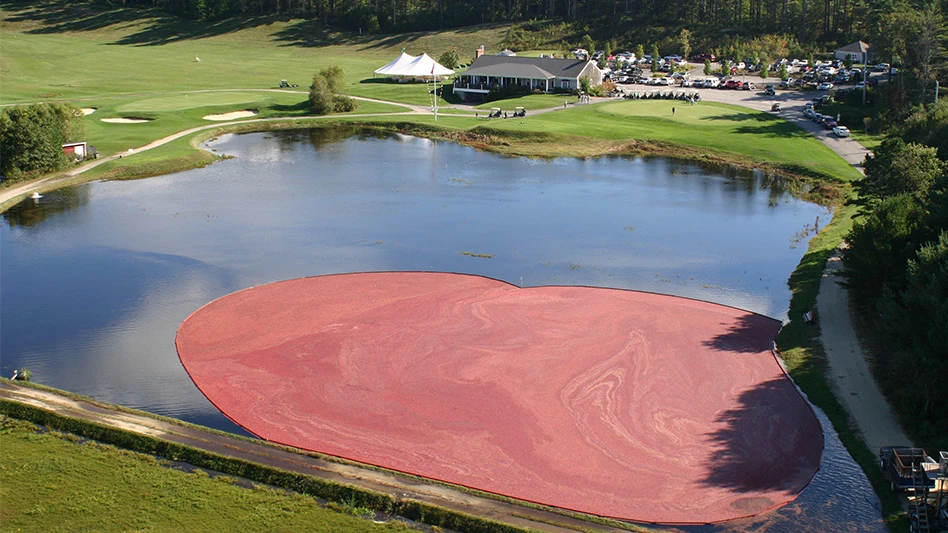

On the morning of his wedding, Will Stearns IV, often called Will, watched his father approach the first tee of Southers Marsh, the golf course they constructed around their cranberry bogs in Plymouth, Massachusetts. After a couple years of heartache, a couple seasons of building, and a couple months of pushing back the first rounds — the thinking being that, as soon as the team teed off, any work would end — Will Stearns III, often called Big Will, was ready to swing away at the course’s ceremonial first drive.
“‘This is going to be an omen for how this golf course is going to go,’” Will remembers thinking. “‘He’s going to pipe one right down the middle. It’s going to be great.’”
Big Will did not pipe one right down the middle.
Instead, after figuring out and navigating the best route to keep their family farm viable amid a long-running cranberry crisis, and hours before his only son tied the knot, Big Will shanked his shot hard toward the pump house, 60 yards at best, and smashed a window.
“It probably wasn’t an omen after all,” Will says.

If anything, that first shank and smattering of shattered glass can now be compared to breaking a bottle of wine or champagne against the hull of a ship before its maiden voyage. While hundreds of other cranberry farmers have struggled as their industry wades through the ups and downs of supply, demand and the desire for sweeter fruit, the Stearnses have thrived, averaging more than 20,000 rounds annually since Southers Marsh opened in July 2001 — and more than 27,000 since the start of the pandemic. Their humorous commercials, released annually on Super Bowl Sunday, have helped them become local characters. Their novel course layout, 4,111 yards and 45 acres of maintained turf weaved through 30 acres of cranberry bogs, has helped them thrive.
Nearly 23 years after turning over parts of their farm to the game, golf is their business. Growing cranberries is more of a hobby.
The only reason the course exists at all is because back in 1995, when the cranberry industry was still centered in Massachusetts and farmers could still expect to bring home $60 per barrel, Big Will planted grass around a bog to prevent erosion. If we already have grass, Will remembers his father saying, let’s build a couple greens. A library visit led to four postage-stamp greens — the largest maybe 1,000 square feet — and a summer of whacking balls over and often into the bogs. “Golf was new to us,” Will says. “And we were having a ball.”
Will was hooked. He had just graduated from Harvard, where he studied mechanical engineering so he could design specialty equipment for cranberry farming, but now he was determined to build a life on the bogs. He moved to New York to work on the Mercantile Exchange just long enough to build up his bank account and buy his own bogs. He moved back to Plymouth in 1998 and started farming.
Everything changed less than a year later. Ocean Spray, the cranberry cooperative in which the Stearnses have long been owner-farmers, mailed letters in January 1999 telling farmers the price for barrels was dropping from $60 to $18. It would eventually crater at $8. “Just brutal timing,” Will says.
Big Will gathered the family — his wife, Nancy, their daughters, Laura and Betsy, and Will — and everybody brainstormed ideas for a week. “The two things that were on everyone’s list were housing development or golf course,” Will says. “My father was pretty adamant about keeping the land in the family and making a go of it. Fortunately, farm credit was either nice enough or foolish enough to lend us the money!”
They persuaded local superintendent-turned-architect Dahn Tibbett and his colleague Nick Filla to design the course among the bogs, then gathered a neighbor named Mike Pruett and four high school kids to help them with the manual labor. They purchased used equipment, nicknamed by color, that would “just run until it wouldn’t run anymore.” There was the Green Hornet and White Lightning. The Black Widow survived the whole project. “The most expensive one, Trusty Rusty, it made one trip and burst into flames,” Will says. “It got loaded at the pit, caught on fire about halfway back and that was it. It never moved again. For Dahn to be able to put up with that, you have to tip your cap to the guy. It took a lot of patience.”
The Stearnses had previously owned an irrigation company and Will spent most of his teen years installing lines. No matter what other challenges they faced, irrigation would not be one of them. “We did all the earth moving and we put in the irrigation system, and Dahn shaped the tees and the greens and the bunkers,” he says. “Dahn made it look like it had always been there.”
Big Will’s errant first shot aside, the first year wasn’t a total disaster. Southers Marsh managed to hit 8,000 rounds from July 7 — Big Will’s 52nd birthday — to the end of the season. Word of mouth helped the number increase every year until they plateaued around 20,000 in 2004.
After a pandemic bump in 2021 and 2022, they hit 30,000 rounds last year. “For the first time,” Will says, “I feel like we might make it.” He laughs.
The only real blemish during recent years was losing Big Will in April 2021. He kept Southers Marsh humming — building a “Nut Squad” of high schoolers who could handle almost any job in the clubhouse, on the course, or in the bogs, and developing friendships with anybody who pulled in off Federal Furnace Road. Hundreds attended his celebration of life — held under a tent during a summer storm — at which Will’s older daughter, Maddie, joked that during her years at the course, “My dad was my boss and my grandpa was the coworker who kept me from getting my work done. He was going to do something epic every day.”
Big Will’s obituary, written by his family to make people laugh almost as much as he did, said his official cause of death was “a several year battle with heart issues, diabetes, skin cancer, lung cancer, pancreatic cancer, bladder cancer, and golfers who would not bring their carts in when it got dark.”
Will’s brother-in-law, J.D. Marks, has filled Big Will’s spot next to Will in the annual commercials — standing in the bogs in waders, selling the course with comedy — but there is no replacing him.
“It’s been a rollercoaster ride,” Will says, “and there have been more good times than bad. The No. 1 complaint we got in 2023 was, ‘I can’t get a tee time.’ I tell them, ‘You know, that’s my goal! That’s what I’ve been trying to do for 23 years!’”
Matt LaWell is Golf Course Industry’s managing editor.
Explore the March 2024 Issue
Check out more from this issue and find your next story to read.
Latest from Golf Course Industry
- Bloom Golf Partners adds HR expert
- Seeking sustainability in Vietnam
- Kerns featured in Envu root diseases webinar
- Toro continues support of National Mayor’s Challenge for Water Conservation
- A different kind of long distance
- Golf Construction Conversations: Stephen Hope
- EnP welcomes new sales manager
- DLF opening centers in Oregon, Ontario






